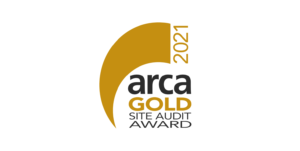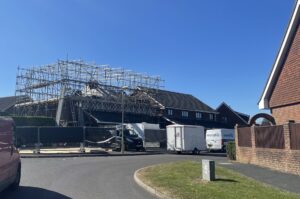ACM
Asbestos Containing Material. This can be a product or material containing any amount or percentage of asbestos by volume. ACMs come in many different forms and contain varying levels of asbestos fibres.
ACOP
Approved Code of Practice, a document giving practical guidance on compliance. ACOP L143, ‘Managing and working with asbestos’, specifically relates to the Control of Asbestos Regulations 2012.
AIB
Asbestos Insulating Board. Used primarily for fire protection, thermal insulation, partitioning and ducts (plenums).
Airborne Fibre Count Certificates
Issued following airborne monitoring for a variety of purposes such as reassurance testing, asbestos work leak testing and personal testing. See also Certificate of Reoccupation.
Amosite
Technical name for ‘brown’ asbestos.
ASB5
This is the form issued by a licensed contractor to the HSE to notify works relating to asbestos treatment or removal.
Asbestos
The fibrous form of the mineral silicates belonging to any one or a combination of the serpentine and amphibole groups of rock-forming minerals, including actinolite, amosite (brown asbestos), anthophyllite, crocidolite (blue asbestos), chrysotile (white asbestos) or tremolite.
Asbestos Cement
A hard product that contains approximately 10-15% asbestos fibres which can be any of the three main types. Examples of common applications are roof sheets, wall cladding and rain water goods such as soil pipes and guttering. This is a relatively low risk material provided it remains intact as the fibres are bonded within the cement matrix.
Asbestos Register
A schedule of all identified items containing or presumed to contain asbestos, including location / condition, and areas that were not accessible during the survey. The Asbestos Register should be consulted for all work which may disturb the fabric of the building, or involve the building services. Such work includes simple & short duration work such as drilling a single hole or attaching items to walls.
Asbestos Regulations
Regulations made under the Health & Safety at Work Act 1974 which control management of and work with ACMs, their removal and disposal together with the responsibilities of employers, managers, employees, contractors, visitors and designers.
Asbestos Waste
Waste containing asbestos is normally deemed as being hazardous waste and stringent regulations apply for carriage on the highways and its disposal. Enforced by the Environmental Agency, a license is required for transporting asbestos on the public highway.
Asbestos Working Enclosure
When carrying out asbestos removal works, the requirement of an enclosure to be built is often required in order to prevent the spread of asbestos fibres. Typically constructed using a 1000 gauge polythene skin, asbestos enclosures are constructed to contain any asbestos fibres which may be released as a result of any removal works being carried out.
Bag Lock
Wherever possible, a bag lock is used in addition to a 3 stage airlock for operatives to transit and decontaminate upon exiting an asbestos enclosure. The bag lock is a temporary storage area for storing bagged contaminated waste prior to transiting to a suitable vehicle or asbestos skip.
Bulk Sample
A sample of material such as boarding, insulation or debris taken by an accredited surveyor to be tested for asbestos fibre content / type by an accredited laboratory.
Blue Asbestos
See ‘Crocidolite’ below.
Brown Asbestos
See ‘Amosite’ above.
CAR2012
The Control of Asbestos Regulations, enacted in 2012.
Certificate of Reoccupation
Issued after asbestos work, following a satisfactory inspection and testing procedure and prior to normal reoccupation being resumed. Has statutory significance and can only be issued by a UKAS accredited organisation.
Chrysotile
Technical name for ‘white’ asbestos fibres.
Control Measure
Something that will reduce the risk posed by a hazard.
Crocidolite
Technical name for ‘blue’ asbestos fibres.
De-Contamination Unit DCU
A DCU is used in order for operatives to decontaminate upon leaving an asbestos enclosure. Wherever possible, this should be a direct connection to the 3 stage airlock of the asbestos enclosure. If not possible, then an appropriate route should be marked out for operatives to use between the airlock and DCU.
Dutyholder
a person holding or sharing asbestos management responsibilities when they have some form of responsibility or control over ‘maintenance’ activities within a non-domestic building.
HSE
Health and Safety Executive. The enforcement of Health and Safety is principally split between two authorities – the Health and Safety Executive cover more specialist areas e.g. universities, and normally those buildings not accessible to the general public. Local authorities cover the more small to medium sized service and retail businesses e.g. hotels, shops and offices.
HSG264 Asbestos: The Survey Guide
This is guidance issued by the HSE to ensure proper practice and conformity in the surveying and reporting of ACMs.
L143 Managing and Working with Asbestos
contains the Control of Asbestos Regulations 2012, the Approved Code of Practice and guidance text for employers about work which disturbs, or is likely to disturb, asbestos, asbestos sampling and laboratory analysis.
Licensable Work (with Asbestos)
Asbestos Licensing is a “permissioning regime”. Permissioning regimes such as asbestos licensing are only considered where the work activities involve significant hazard, risk or public concern. Asbestos is classified as a category 1 carcinogen, with asbestos related disease causing around 4500 deaths every year in the UK. Work with asbestos requires a high degree of regulatory control and the purpose of licensing is to achieve this.
Management Survey (previously known as a Type 2 Survey)
the standard survey required for the Asbestos Register. Locates, as far as reasonably practicable, asbestos materials that could be disturbed or damaged during normal occupancy of the building. Will often involve minor intrusive work and sampling of materials for subsequent analysis in a laboratory. The survey does not detect asbestos concealed or ‘hidden’ within a building and in the first instance, should not be considered as a suitable assessment for undertaking building works.
Method Statement
The method by which the Licensed Removal Contractor will treat or remove and dispose of ACMs.
Negative Pressure Unit (NPU)
A negative pressure unit is used to draw fresh air into an asbestos working enclosure. The provision of adequate ventilation is paramount to the safety of the operatives working within an asbestos enclosure. A NPU (or series of NPUs) should be used to ensure a minimum of 8 air changes per hour and provide a negative differential pressure (ΔP) of -5Pa between the enclosure and atmosphere. In order to stop asbestos fibres from exhausting from an enclosure, all NPUs are fitted with high efficiency particulate air (HEPA) filters. The filters are changed daily. A visual inspection can be carried out on-site by viewing the door flaps at the entrance to the asbestos enclosure. In order to have the correct ventilation, there should be 200-250mm deflection in the door flap.
Notification Period
Where asbestos work is deemed as ‘licensable work with asbestos’ i.e. work requiring a licensed issued by the HSE. It is a condition of the license for contractors to formally notify the appropriate enforcing authority at least 14 days before each job. Notification is done via the ASB5 form. Suitable and sufficient plans of work are a license condition for any licensable work with asbestos, and a legal requirement. It is therefore imperative that adequate / realistic timescales are considered early in the project planning stage.
Plan of Works
The plan by which a Licensed Asbestos Removal contractor will set out the transit routes, location of skip, enclosure, location of Negative Pressure Unit etc.
PPE
Personal Protective Equipment such as overalls, masks, gloves etc.
Project Manager
Any person instructing or supervising work within University controlled buildings e.g. Estate Management, Maintenance Managers, Departmental Heads or representatives. Project management entails important responsibilities for asbestos.
Project management
The planning, monitoring and control of all aspects of a project and the motivation of all those involved in it, to achieve the project objectives on time and to the specified cost, quality.
Refurbishment and Demolition Survey (previously known as a Type 3 Survey)
The purpose of these surveys is to identify all ACMs so that they can be removed prior to refurbishment or demolition. Utilises invasive inspection techniques and is normally disruptive e.g. access into voids, lifting floorboards and investigating back to the structure where possible. Should detect hidden and concealed materials. Required to be carried out in the areas where projects, major works, refurbishment, demolition and maintenance work of an invasive nature are being carried out.
RPE
Respiratory Protective Equipment such as either a full or half face mask.
Visual Inspection
An inspection of the enclosure / work area by the Analyst to see if all the ACMs specified have been satisfactorily remediated prior to carrying out an Airborne Fibre Count within the affected area.
UKAS
United Kingdom Accreditation Service. This is the sole national accreditation body recognised by government to assess, against internationally agreed standards, organisations that provide certification, testing, inspection and calibration services. Accreditation by UKAS demonstrates competence, impartiality and performance capabilities.
White Asbestos
See Chrysotile above.





